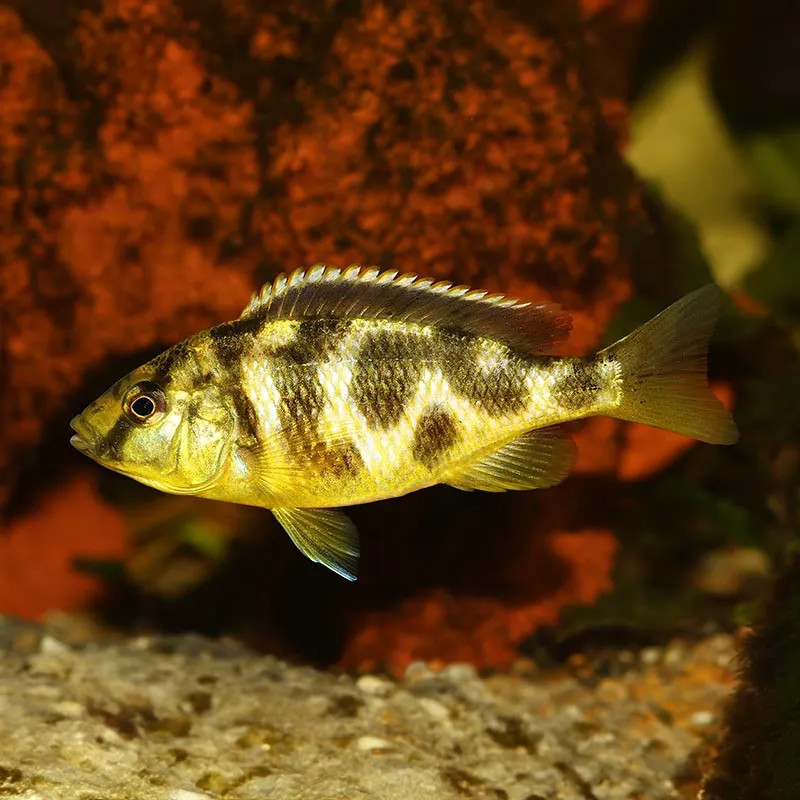Stocks Available
TEXAS
SKU:118884
HERICHTHYS CYNOGUTTATUS
2.5 CM

Stock Available
Introduction: • Common Names: Venustus, Venustus Cichlid • Natural Habitat: Indigenous to the rocky shores of Lake Tanganyika in East Africa, typically found in deeper waters with rocky substrates and sandy areas. Physical Characteristics: • Appearance: The Venustus Cichlid features a sleek, elongated body with a striking blue and yellow coloration. Males are generally larger with more vivid coloration compared to females. • Size: Can grow up to 8-10 inches (20-25 cm) in length. • Lifespan: With appropriate care, they can live for approximately 8-12 years. Habitat Requirements: • Tank Size: A minimum of 75 gallons is recommended to accommodate their size and territorial behavior; larger tanks are preferable for stable conditions. • Water Conditions: o Temperature: Ideal water temperature ranges from 75-80°F (24-27°C). o pH: Prefers a pH level between 7.5 and 9.0, typical of Lake Tanganyika's alkaline waters. • Aquascaping: Provide ample hiding spots using rocks and caves, while maintaining open swimming areas. Diet: • Primary Diet: Carnivorous; feeds on small fish, crustaceans, and invertebrates in the wild. • Supplemental Feeding: Offer high-quality pellets, flakes, and frozen or live foods like brine shrimp and bloodworms to ensure a balanced diet. • Feeding Frequency: Feed small portions 2-3 times per day for optimal health and growth. Compatibility: • Temperament: Generally semi-aggressive, particularly during breeding or territorial disputes. • Suitable Tank Mates: Compatible with other robust African cichlids of similar size; avoid smaller or overly aggressive species. • Incompatibilities: Not suitable with timid species that may be bullied or stressed by the Venustus. Care Level: • Difficulty: Moderate; requires stable water parameters and appropriate tank mates to thrive. • Health Monitoring: Regularly check for signs of stress or illness, such as unusual swimming patterns or changes in appetite. Breeding: • Breeding in Captivity: Can be bred successfully in aquariums, forming strong pair bonds. • Spawning: Egg layers; females will lay eggs on flat surfaces, and males will display courtship behaviors to attract females. Economic Considerations: • Market Demand: Popular among cichlid enthusiasts due to their vibrant colors and unique behavior. • Wholesale/Retail Pricing: Available at moderate prices, with variations depending on color and size. Sustainability and Conservation: • Wild Population: Current population levels are stable, but habitat destruction and overfishing could pose future risks. • Aquaculture Efforts: Increasing success in captive breeding helps reduce pressure on wild populations. • Regulations: Compliance with local and international regulations is essential to protect their natural habitats. Conclusion: The Venustus Cichlid is a stunning and engaging addition to any freshwater aquarium. With their captivating colors and dynamic behavior, they require careful attention to their environment and diet. When provided with the right care, Venustus Cichlids can thrive, offering aquarium hobbyists a rewarding experience.
Data sheet
7 other products in the same category:
Customers who bought this product also bought: